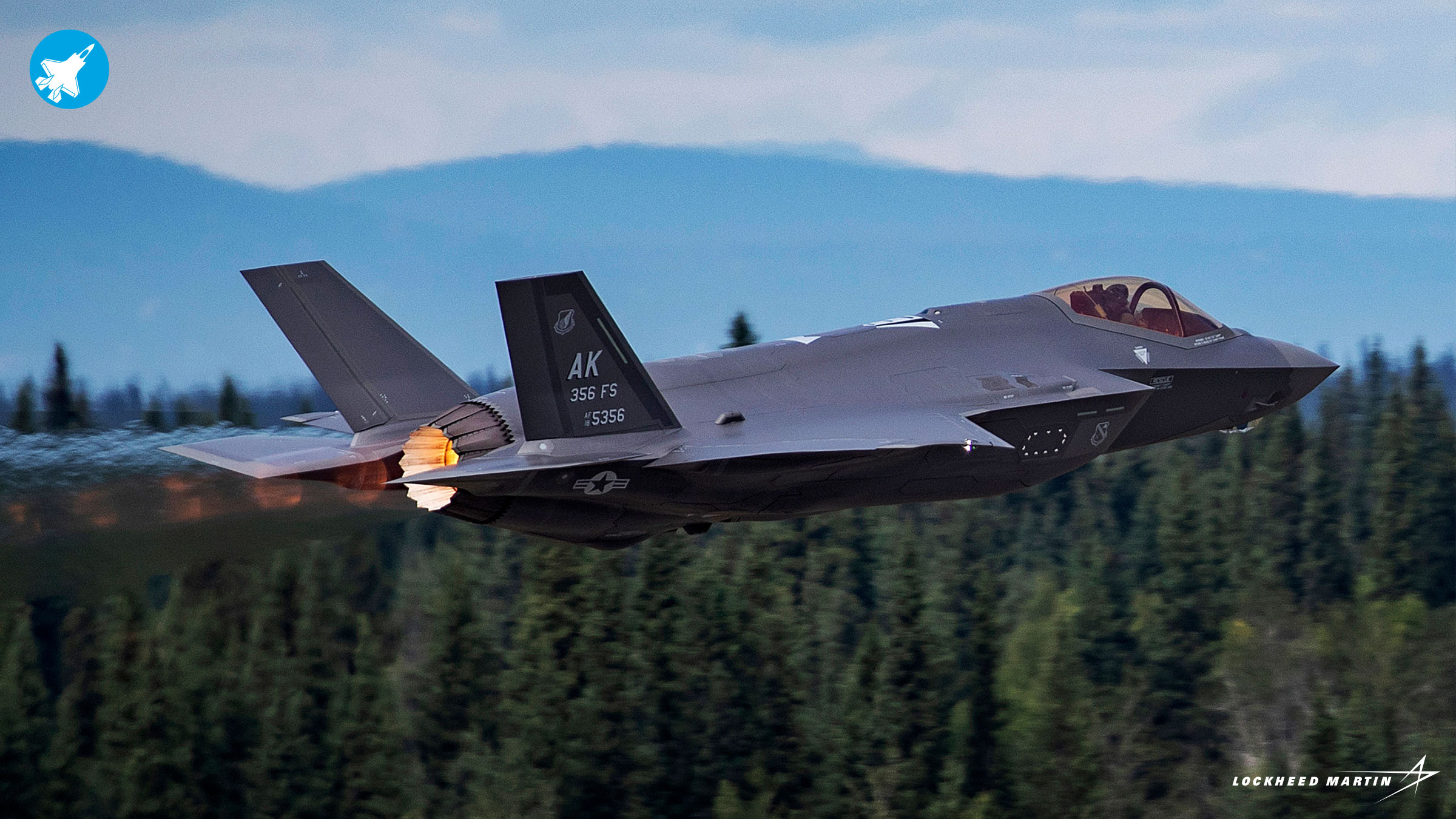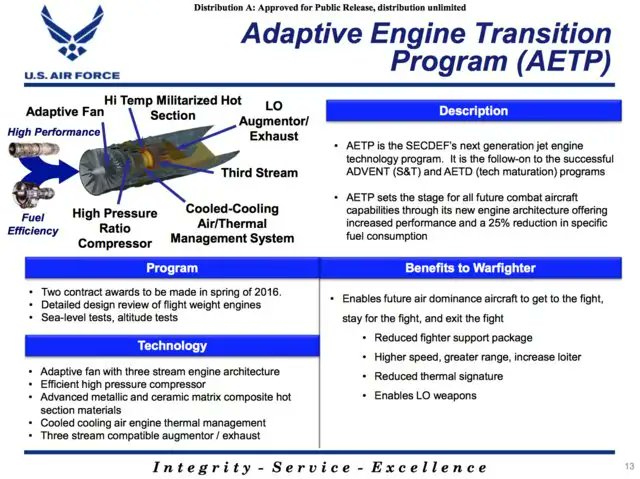The US Air Force has initiated steps to improve the engine of the F-35 stealth fighters, days after China declared that it was upgrading the J-20’s powerplant. On January 27, the US Air Force began the process to acquire innovative new adaptive cycle engines for the Joint Strike Fighter.
China’s J-20 Fleet Strength Not More Than 73; Three PLAAF Brigades Now Operate ‘Mighty’ Stealth Fighters — US Think Tank
The new engines under the USAF’s Adaptive Engine Transition Program (AETP), which are still in development, are expected to give a major boost to F-35’s capabilities. Additionally, this could provide the US-made stealth aircraft with a significant edge over its rivals such as the Chinese J-20 and the Russian Su-57.

As officials evaluate the possibility of upgrading the F-35A with a new propulsion system, the Air Force is seeking “sources” to transition to the technical and manufacturing development phase of its advanced engine program, stated Inside Defense.
The sources sought are for the F-35 Adaptive Engine Replacement Program, which intends to complete the Engineering and Manufacturing Development (EMD) phase of the service’s Adaptive Engine Transition Program.
Under that initiative, Pratt & Whitney and General Electric are both maturing advanced engine prototypes meant to fit into an F-35A.
So it begins.
USAF releases "sources sought" to open F-35 Adaptive Engine Replacement (FAER) program.
The market survey seeks sources that can deliver an adaptive engine to operational F-35s by FY 2028.
GE's XA100 and P&W's XA101 are the options.https://t.co/93zCdypvPZ pic.twitter.com/SezAwAFMhF
— Steve Trimble (@TheDEWLine) January 28, 2022
The notice, which requests responses by February 28, asks companies to describe their “ability to enter into a contract committing to the delivery of F-35 engines” and begin low-rate initial production in the fiscal year 2028.
They have also been asked to provide feedback on methods for reducing program costs and areas in need of additional manufacturing maturation to ensure production readiness by FY-29.
Over the next decade, the Pentagon expects to improve the F-35 fighter plane with new weaponry, processing technology, and software.
In December year, reports emerged claiming that the US Congress wanted AETP engines installed on all F-35As starting in 2027. The draft of the National Defense Authorization Act (NDAA) had references to the AETP with a 2027 deadline, for all the three variants of the F-35.
A Much-Eeeded Engine Upgrade
In 2011, the Pentagon discontinued funding for General Electric’s F136 engine, leaving the Pratt & Whitney F135 as the only propulsion choice for Lockheed Martin’s F-35.
The F-35, on the other hand, will require a better engine to power the upcoming Block 4 modifications that would make the fighter more lethal.
While there have been talks about F-35 engine flaws, the idea of replacing the existing engine with a better one did not get momentum in the past owing to cost and other issues, as previously stated by the EurAsian Times.

The Adaptive Engine Transition Program (AETP) seeks to develop an entirely new power train, with numerous prototypes already being tested. The AETP engine, or some other option, is projected to give a major performance gain to all three F-35 variants, in addition to providing improved efficiency.
An adaptive cycle engine is a type of turbine that can vary airflow through three different air streams depending on whether an aircraft needs more efficiency or power. When in cruising mode, adaptive engines change the volume of airflow that bypasses the turbine core by opening a third stream.
The AETP program aims to create lightweight, flight-ready prototypes of three-stream adaptive engines. If such engines were deployed, airpower with increased range, reduced tanker requirements, and more cooling air for thermal control would all be achievable.
Who All Are In The Race
The AETP currently has two contracts for adaptive cycle engine technology demonstrators. In May last year, GE conducted the maiden test-runs of its own full-scale XA100 three-stream adaptive combat engine, with Pratt and Whitney following in October with their XA101.
???
How does >10% more thrust sound?
GE’s #XA100 adaptive cycle engine can deliver it for the F-35, resulting in better acceleration and combat performance. pic.twitter.com/m4Bat71qgI
— GE Aviation (@GEAviation) January 28, 2022
According to David Tweedie, GE’s head of advanced combat engines, the XA100 is “drop-in” compatible with the F-35A conventional type utilized by the Air Force and most overseas clients, as well as the F-35C carrier variant.
However, it needs to be modified significantly for use on the F-35B, which is a short takeoff and vertical landing (STOVL) variant.

While Pratt & Whitney is developing an adaptive engine, the company is also proposing an enhanced version of the F135 that it believes would provide the Pentagon with the most bang for its buck, according to Jen Latka, Pratt & Whitney’s vice president for the F135 engine development.

The improved F135 could be applicable to all three variants of the fighter jet, providing increased thrust and power management without requiring the services to field a new engine.
In comparison to the Pratt & Whitney F135 engine that currently powers the Lockheed Martin F-35 stealth fighter, the AETP is a US Air Force research project that aims to provide a 30% increase in range, an 18% reduction in acceleration time, and improved thermal management, as previously by EurAsian Times.

The F135 engine, often known as the stealth aircraft’s heart, provides 10 militaries across the world with more than 40,000 pounds of thrust, an unrivaled low-observable signature, world-class thermal management, and the latest integrated engine control system.
The current F-35 engine has two levels of maintenance: operational and depot. Recently, depot capacity has caused challenges, as financial constraints delayed site standup and a power module scarcity resulted in an engine backlog.
In the face of controversies surrounding a series of F-35 crashes, it has become imperative for the US military to work towards addressing safety concerns, and an engine upgrade seems to be part of this goal.
- Contact the author at sakshi.tiwari9555@gmail.com
- Follow EurAsian Times on Google News





